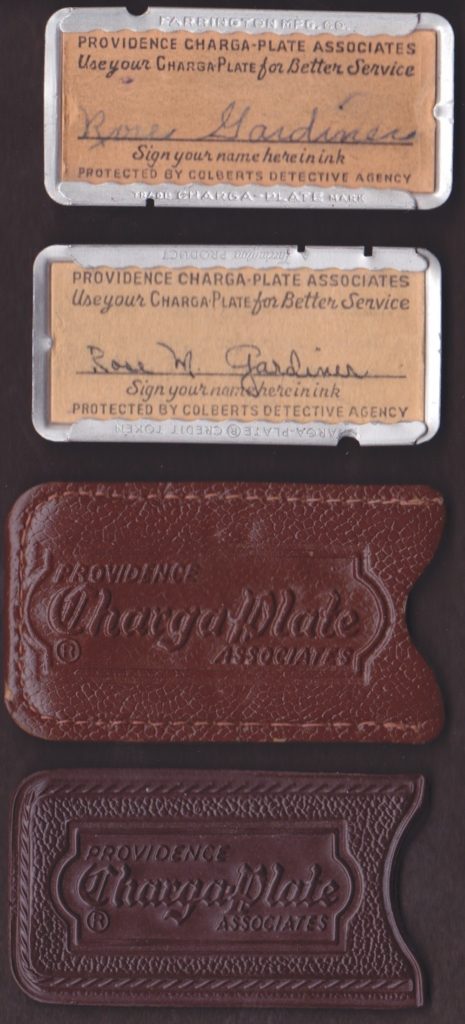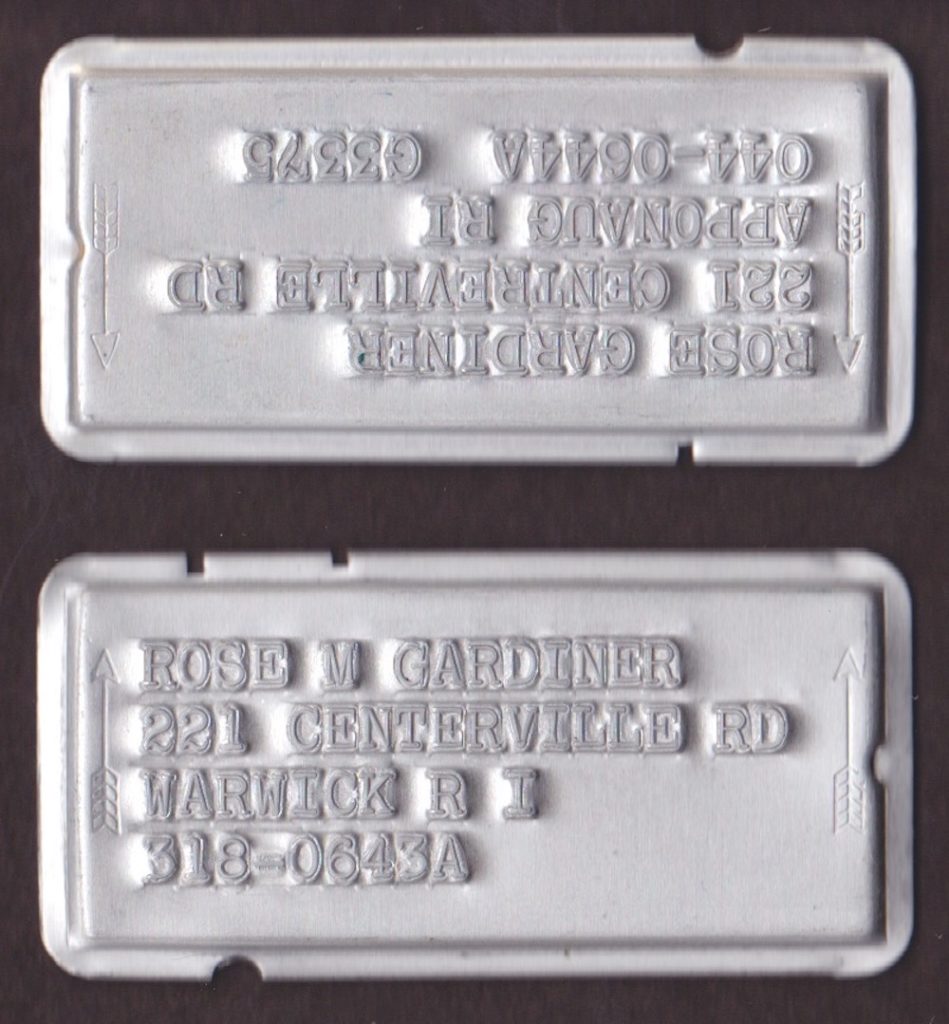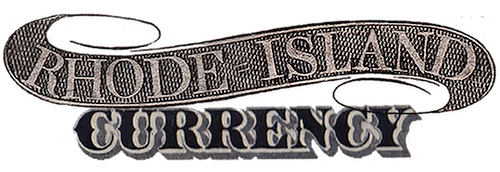Providence Charga-Plate, Precursor to the Credit Card


Circa 1930-50s. Issued by Providence Charga-Plate Associates to Rose Gardiner of Warwick, RI. Protected by Colberts Detective Agency.
According to Wikipedia:
“The Charga-Plate, developed in 1928, was an early predecessor of the credit card and was used in the U.S. from the 1930s to the late 1950s. It was a 2 1⁄2-by-1 1⁄4-inch (64 mm × 32 mm) rectangle of sheet metal related to Addressograph and military dog tag systems. It was embossed with the customer’s name, city, and state. It held a small paper card on its back for a signature. In recording a purchase, the plate was laid into a recess in the imprinter, with a paper “charge slip” positioned on top of it. The record of the transaction included an impression of the embossed information, made by the imprinter pressing an inked ribbon against the charge slip. Charga-Plate was a trademark of Farrington Manufacturing Co. Charga-Plates were issued by large-scale merchants to their regular customers, much like department store credit cards of today. In some cases, the plates were kept in the issuing store rather than held by customers. When an authorized user made a purchase, a clerk retrieved the plate from the store’s files and then processed the purchase. Charga-Plates speeded back-office bookkeeping and reduced copying errors that were done manually in paper ledgers in each store.”
